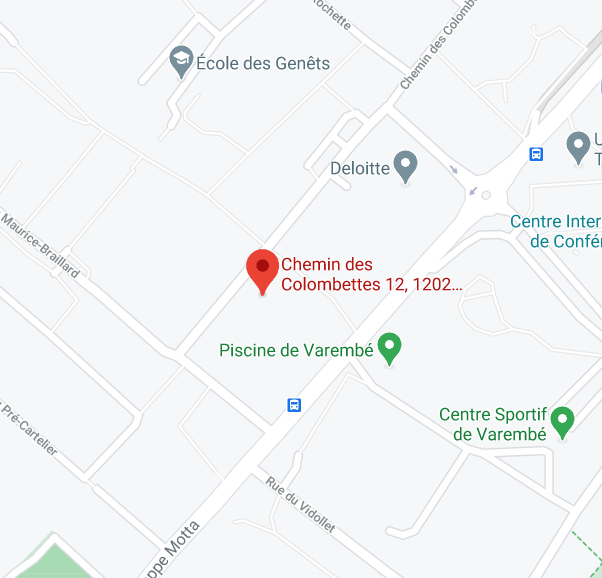Refractive surgery - laser treatment of vision defects
For a life without glasses, opt for refractive surgery. We offer you the most modern technologies of treatment of refractive errors such as: shortsightedness – myopia, farsightedness – hyperopia and blurry vision – astigmatism. Below are methods of refractive surgery offered by our practice.
Intraocular lens implantation (ICL)
Implantation of a lens similar to a contact lens, but implanted inside the eye, into the space between the iris and the natural lens (without removing the patient’s natural lens). It is a method of correcting a vision defect regardless of its nature (myopia, hyperopia and astigmatism). The method is a solution addressed primarily to young patients with high myopia, high hyperopia or astigmatism or to patients where the corneal procedure like PRK or LASIK is not possible to be performed.
Laser Assisted Refractive Lens Exchange (RLE)
This refractive procedure is named Laser Assisted Refractive Lens Exchange (RLE) otherwise known as Clear lens exchange (CLE), or if the procedure is performed on patients over 40 years old, the procedure is called presbyopic lens exchange (PRELEX). The procedure consists in replacing the patient’s natural lens with a properly calculated and personalized lens implant. After the procedure, depending on the pre-operative choice of the patient, the patient becomes independent from distance or near glasses, or even totally independent of glasses if an advanced multifocal lens is selected, i.e. a trifocal lens or EDOF lens (pseudo progressive – extended depth of focus lens). The procedure, under certain conditions, makes it possible to completely abandon corrective glasses. In order for the surgery to be as safe as possible and for the results to be predictable and to correspond to the preoperative calculation, we suggest performing surgery with the assistance of the Zimer LDV Z8® FEMTOsecond laser. The use of a laser increases the safety of the surgical procedure and enables precise corneal incisions, capsulorhexis, i.e. a round opening in the anterior lens capsule, and fragmentation of the patient’s own lens. The use of a laser guarantees precision and safety.
PRK
This refractive procedure namedPRKis a laser vision correction by an excimerlaser. The PRK method is a surface ablation method in which the cornea for the action of an excimer laser is prepared by separating the corneal epithelium with an alcohol solution. Then, using a Bausch & Lomb Technolas® excimer laser, the cornea is modeled to correct the existing sight defect. As pain persists for about 2-3 days after the procedure, the PRK method is used for medical indications in cases where the FEMTOsecond laser cannot be used (e.g. too thin cornea, specific profession performed by the patient or patient preferences). After surgery, the patient wears protective contact lenses for 5 to 6 days. Visual acuity returns after about 2-4 weeks.
FEMTO LASIK (All – LASER LASIK)
LASIK laser vision correction with the use of a FEMTOsecond laser is the most technically advanced refractive treatment offered to you in our practice. During the first stage of the procedure, the corneal flap is created with the most modern Zimer LDV Z8® FEMTOsecond laser. Afterwards, the cornea is modeled to correct the existing sight defect using a Bausch & Lomb Technolas® excimer laser.The final stage of the procedure is the closing of the corneal flap.
The use of the FEMTOsecond laser increases the precision of the resulting corneal flap, which directly influences convalescence time and the range of defects that can be corrected. The unquestionable advantage of the FEMTO LASIK method is the reduction of postsurgical pain and discomfort, the shortening of the eye healing period after the procedure and a significant increase in the safety of the procedure.
Laser vision correction is a quick, safe and practically painless method of getting rid of a vision defect. The patient can see well the day after the procedure, while slight fluctuations in vision may persist for about a month. Continuous improvement and stabilization of vision occurs up to about 6 months after the procedure.
CAUTION
In order to properly qualify for refractive surgery, it is necessary to stop wearing contact lenses for a minimum period of 2 weeks prior to the examination.
All procedures are performed on an outpatient basis, under local anesthesia. The patient cannot drive right after the procedure and it is also recommended to come accompanied.
After each type of refractive treatment, for about a month you should avoid strenuous physical activity, swimming, sunbathing, and staying in a dry and smoky environment. Side effects that are extremely rare may occur and persist for up to several months after the procedure are first of all: dry eyes, decreased vision of contrasts in dim lighting and glare during night driving.


Eye specialist doctor FMH
Eye surgeon FMH
Fellow European Board of Ophthalmology
Chemin des Colombettes 12
1202 Geneva, Switzerland
Tel. +41 (0) 22 733 64 46
Fax. +41 (0) 22 733 64 56
8:30 – 18:00
Wednesday
14:00 – 18:30
Thursday
8:30 – 13:30
Friday
8:30 – 13:00
Visits by appointment only
